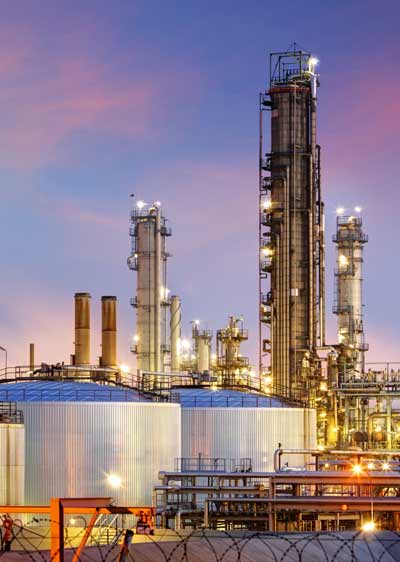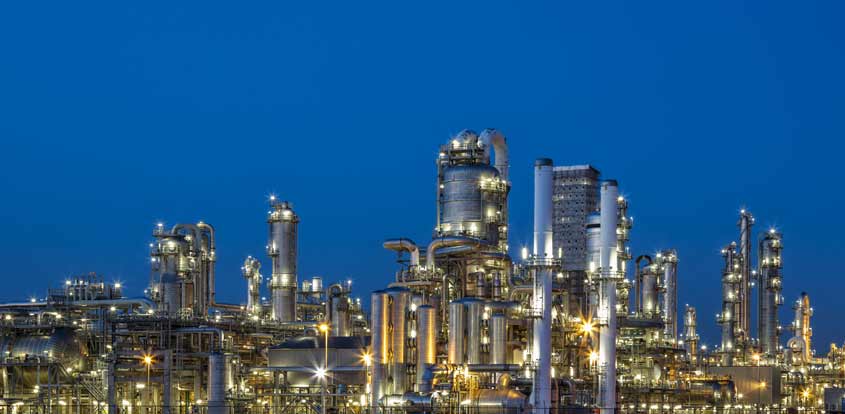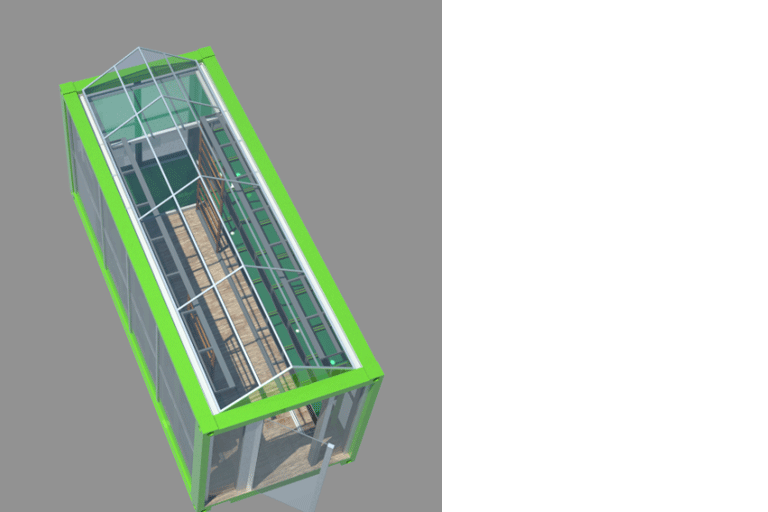By Neha Ghanshamdas, Data analyst, Global Business Reports, Singapore
*This is an adapted version of an article published as part of a special report on Singapore’s chemical industry. The full report is available at: www.gbreports.com
Singapore is on an Internet of things (IoT) crusade. The resource-scarce nation is seeking to leverage its formative strength – talent – to transform itself and add value in the global marketplace by building the world’s first Smart Nation. The Smart Nation drive aims to leverage IoT technology to improve the quality of life of the country’s citizens, infrastructure and industrial sector, in a bid for Singapore to remain one of the most economically competitive and livable cities in the world.

With manufacturing, including chemicals and chemical products, representing close to 20 percent of the country’s GDP, the chemical industry factors heavily into Singapore’s Smart Nation equation. Applied in this context, the industrial IoT (IIoT) has the potential to increase the productivity, safety and competitiveness of the chemical industry ecosystem. By helping solution providers overcome the difficult “first-adopter” stage, Singapore’s economy stands to gain first-mover advantage and to establish itself as the IIoT technology and business hub of Asia.
The IoT explained
It is the latest technology buzz phrase, taking not just Singapore but the world by storm. But what exactly does the Internet of things mean and how pertinent is the concept to the world of chemicals?
IoT can be loosely defined as a network of physical objects that are linked to one another through the Internet. More concretely, it refers to physical objects, equipment or machinery fitted with various types of data-collecting sensors. Cloud-based applications analyze the data collected by these sensors, enabling machines to communicate with other machines, applications or users. The application of IoT is not limited to any particular industry, device or user; it can be employed in virtually every sphere of life.
As an example, new smart metering systems in homes digitally provide energy suppliers and end users with consumption data. Smart meters automatically send meter readings to suppliers, and show users how much energy they are consuming in near-real time. The availability of these data results in more accurate energy bills and increased energy awareness among consumers, ultimately leading to cost savings and more sustainable living practices. Just imagine what IoT can achieve at scale, for instance within a large chemical facility.
Improving your bottom line
While IoT debuted decades ago, the concept has only recently begun to gain traction in the industrial space. Why? The answer is simple: data. The sheer quantity of data generated within a process plant or mine site is astounding. According to Accenture’s Chemical Consulting Services, 144 terabytes of data are generated in a mine site in just one hour. To record just one terabyte’s worth on paper would require 50,000 trees to be pulped. Until recently, these valuable data were not being leveraged. But now companies such as Emerson Process Management are stepping in with IIoT solutions. As Vidya Ramnath, the company’s vice president of solutions and lifecycle services, explains, IIoT helps “industrial plants gain huge benefits from data analytics, by integrating and analyzing large amounts of data using smart field devices on plant equipment.”
These benefits trickle down to the bottom line. A company with earnings before tax, depreciation and amortization of USD 2 billion can save USD 100 million by implementing digital plant initiatives. By going digital, end users are quickly discovering that industrial IoT (IIoT) boosts operations on two fundamental fronts: reliability and energy efficiency. In today’s marketplace, increasing and ensuring both are imperatives for any firm to remain competitive. For example, chemical giant Denka was able to reduce the cost of steam by 7 percent by engaging IIoT and installing sensors on 148 steam traps at its chemical plant.
“In a highly complex and volatile business environment, companies are finding ways to perform, optimize processes and operate more efficiently to sustain growth,” says Joseph Lee Ching Hua, head of the new Co-Innovation Center at Japanese electrical engineering and software firm Yokogawa and general manager of its Singapore Development Center.

Another large chemical manufacturer, Afton, recently unveiled a new plant on Singapore’s Jurong Island with its sights set on realizing the benefits of digitization. “Afton’s plant on Jurong Island has a very high level of automation and utilizes advanced distributed control systems to manage plant process and utilities systems, ensuring ongoing safety, productivity and sustainability. Notably, it is our first facility in the world to have an installed remote machine-human interface, which reduces manual communication and human error, thereby improving productivity,” says Sean Spencer, vice president and managing director of Afton Asia Pacific.
How exactly can a chemical plant leverage IIoT to achieve these savings? According to Accenture, four fundamental pieces of the IIoT puzzle need to fit together for change to occur: sensors, data science, a human-machine interface and action. Traditionally, a contractor comes on site to inspect the health of plant equipment, including pumps, heat exchangers, blowers, cooling tower cells and non-process compressors. Manual inspection and data collection are typically conducted a few times throughout the year to ensure smooth plant operation. But there are drawbacks with this conventional process. The first relates to labor. Large teams are deployed to perform inspections, collect data and identify required improvements. Contractors often have to measure the status of dangerous equipment, adding an additional layer of risk to an already costly and time-intensive process. On top of this, many problems are often not detected on time or at all, leading to breakdowns that interrupt plant operations and production, and result in capital losses.
The first and key ingredient in the IIoT recipe, a sensor, automates measurements and performs them more frequently than personnel can. Affixed to assets, sensors can measure variables such as pressure, temperature, corrosion and humidity, and transmit relevant data over a secure network to analytics software. This is where the second ingredient, data science, comes into play, generating reports that reveal the condition of a given asset. Third, an interface between machine and human provides the operator with the information needed to make an informed, cost-saving decision. Analytics can often specify the amount of financial loss associated with the deterioration of an asset, yielding a clear impetus for the fourth ingredient to kick in: action. In this way, leveraging IIoT can result in less time spent on collecting data manually and more time acting on results, leading to improved productivity, increased efficiency and cost savings.
Rent, lease or buy?
Reading this, you may be quickly wooed by the wonders of IIoT. But is it possible to implement such technology in a facility without overhauling the entire plant? And do the purported savings justify the cost?

There are various approaches to plant modernization and the realization of a total digital ecosystem in which sensors, networking and software fit together. An IIoT infrastructure can be installed and parceled within a plant in countless ways. Traditionally, plant owners have invested in purchasing sensors, networks and software to conduct reports autonomously. However, IIoT allows for remote monitoring, and new business models that encourage partnerships and enable less capital-intensive commitments. For example, digital automation provider Emerson installs sensors, networks and software in exchange for zero upfront investment. The firm offers what might be described as an IIoT subscription, charging a monthly fee for the resulting data analytics.
“Pumps, steam traps, and other equipment monitored on-premise, centrally from the corporate engineering center and remotely from Emerson’s center of excellence, have enabled our customers to yield huge benefits at the operational level. These real-world implementations are helping industrial facilities to frame their priorities for IIoT investments,” says Emerson’s Vidya Ramnath.
With capital expenditure considerations also in mind, systems integrator Accenture is offering clients the opportunity to rent or lease equipment, and to launch pilots to test the water before considering building an entire network. “There is also a trend towards permanently leasing and renting, and adopting the use of shared services,” says Senthil Ramani, managing director, digital business lead and director of Accenture’s newly established IoT Center of Excellence in Singapore. The technology giant is committed to building “custom IoT journeys” for its industrial clients in the region through its IoT Center of Excellence.
Meanwhile, Yokogawa is working alongside its customers at its new Singapore-based Co-Innovation Center to ensure the efficient utilization of data and diagnostics generated by its smart sensors.
But regardless of the chosen provider, by leveraging data science, digital transformation has the potential to maximize the utilization of existing assets, often with little or no capital expenditure.
Employing a new generation
IIoT is inextricably tied to the workforce of the future. By 2025, millennials, or “digital natives”, will make up 75 percent of the global workforce. This implies that to attract and retain talent, existing business models within traditional manufacturing industries such as chemicals or mining will have to evolve and incorporate new technologies.
Incoming workers are quick learners and gear towards efficiency. They are not inclined to read thick instruction manuals to assimilate operational knowledge. “Wisdom needs to be digitized, without which smartness cannot meet wisdom, and younger operators run the risk of working in a plant without sufficient knowledge. Going digital can help solve this issue and accelerate the pace of adoption for the incoming generation,” says Accenture’s Senthil Ramani. As more and more wisdom is digitized, the results are multifold. Fewer workers are needed to work a plant, and safety levels increase along with productivity. As more processes are automated progressively, workers can engage in higher value-added tasks that are both safe and more technical.
Leading the digital revolution
Singapore is evolving into an IIoT global center of excellence, with technology players such as Emerson, Accenture and Yokogawa pioneering new developments in the sector. With the support of Singapore’s Government, these players have established, respectively, a Pervasive Sensing Center of Excellence, an IoT Center of Excellence and a Co-Innovation Center. Government agencies are also incentivizing the uptake of plant modernization, digitization and automation, and supporting the development of an innovative industrial ecosystem. These policies are not only in line with goals to improve productivity, but factor in to a greater vision of total transformation.
“Singapore was, and continues to be, a net exporter of chemicals,” says Mr. Ramani. “But more importantly, I believe the city-state is on its way to transforming itself and becoming a net exporter of innovation in the chemical industry, with IoT leading the agenda.”



